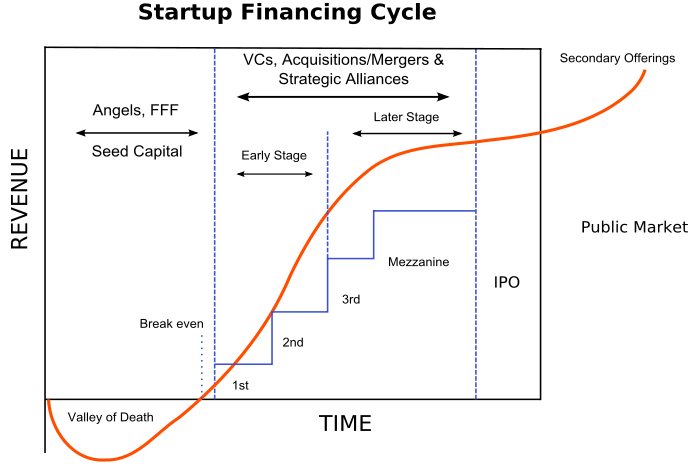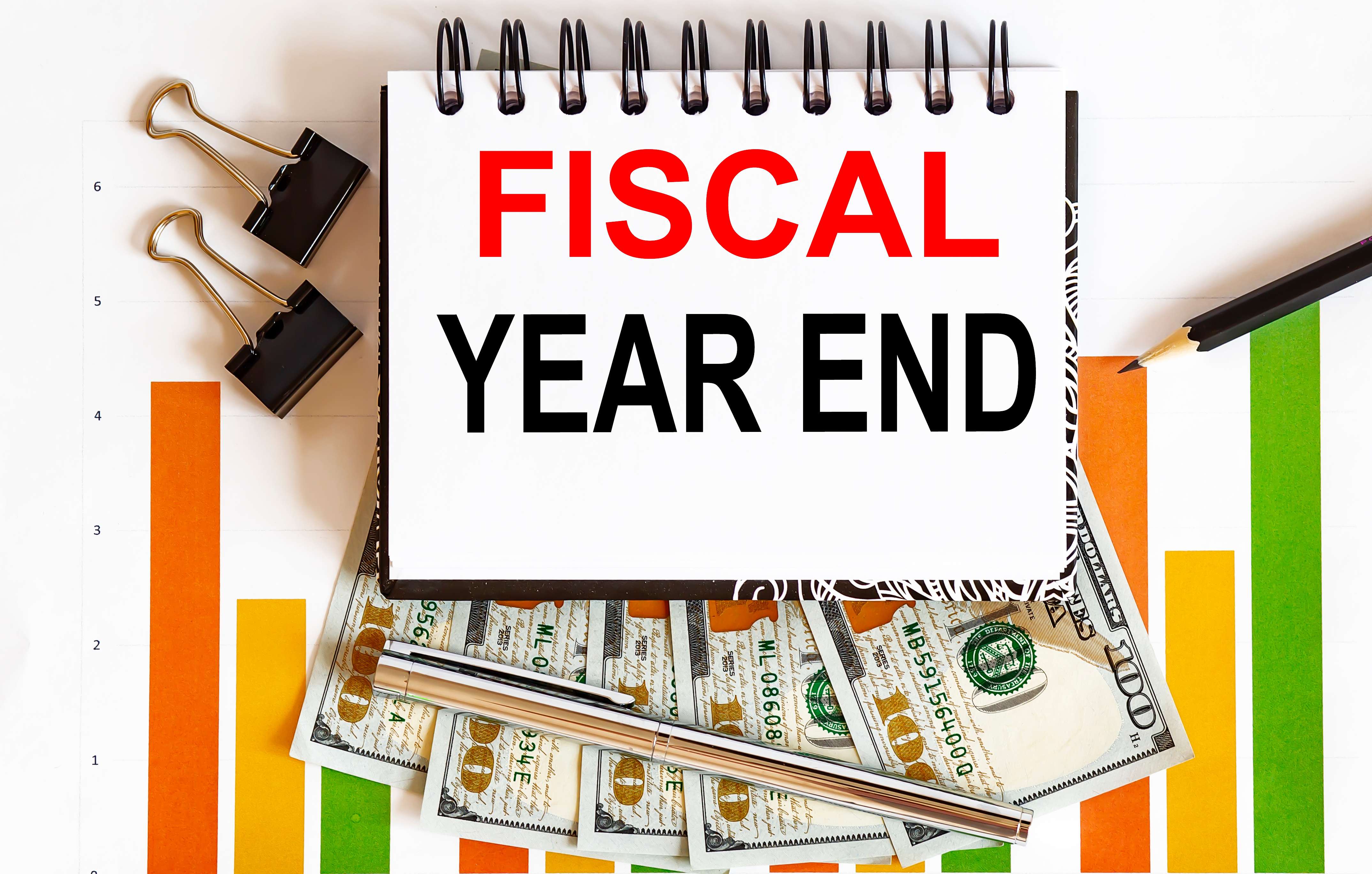 Fundraising for your startup has always been considered part art, part science, and part luck. It’s an important step in your business when you decide to raise funding. This indicates a time that you’ve done research on your industry, how your niche can be a game-changer, you’ve most likely already performed a beta test and received feedback from first adopters and started to generate revenue. Now, it’s time to improve some processes or technology to help you capture more customers. In order to do so, you need more cash flow. And that can occur in several different ways which we will discuss further but understanding what the stage of your company is the first step. Some founders initially will ask friends or family for a small investment in their startup business idea. Next comes equity funding, which is an umbrella term that refers to any means of financing your company in which you receive money in exchange for issuing shares of your stock. The first type is called Pre-seed funding, which is for early-stage startups who need capital to take their product or service beyond a prototype. The amount of funding is relatively small, but it helps the founders continue to test and build an initial core team. Most pre-seed fundraising rounds fall between $50k-$750k (some more but usually less than $1M.
Fundraising for your startup has always been considered part art, part science, and part luck. It’s an important step in your business when you decide to raise funding. This indicates a time that you’ve done research on your industry, how your niche can be a game-changer, you’ve most likely already performed a beta test and received feedback from first adopters and started to generate revenue. Now, it’s time to improve some processes or technology to help you capture more customers. In order to do so, you need more cash flow. And that can occur in several different ways which we will discuss further but understanding what the stage of your company is the first step. Some founders initially will ask friends or family for a small investment in their startup business idea. Next comes equity funding, which is an umbrella term that refers to any means of financing your company in which you receive money in exchange for issuing shares of your stock. The first type is called Pre-seed funding, which is for early-stage startups who need capital to take their product or service beyond a prototype. The amount of funding is relatively small, but it helps the founders continue to test and build an initial core team. Most pre-seed fundraising rounds fall between $50k-$750k (some more but usually less than $1M.
Next comes Seed funding, as the name implies, is a relatively small amount of money a business needs early on to get started. Usually businesses seeking a seed round are still in the concept stage and need just a small capital infusion to cover expenses until they start generating revenue. Startup companies need to purchase equipment, rent offices, and hire employees. More importantly, they need to grow. In almost every case they will require outside capital to do these things. Seed money can also be a helpful tool for attracting future money from bigger investors. Because seed capital is smaller and more of a high-risk investment, it generally will come from friends and family or smaller angel investors. Seed fundraising rounds can vary widely and generally can be up to $2 million. Seed funding is the first investment in a startup company in exchange for equity/partial ownership of the company. Seed funding can come from a variety of sources, such as friends and family, Angel Investors, micro VCs, Crowdfunding and startup accelerators. The equity given up in exchange for the seed funding is generally in the range of 10% – 20%.
 It can be easier to raise seed rounds from an angel investor, as opposed to going for the brass ring of VC investment. With an angel investor, you will usually pay less of a premium in the amount of the stock or percentage of your company you give up because angel investors have other means of making money. They may not be looking for as specific a level of return as venture capitalists might be.
It can be easier to raise seed rounds from an angel investor, as opposed to going for the brass ring of VC investment. With an angel investor, you will usually pay less of a premium in the amount of the stock or percentage of your company you give up because angel investors have other means of making money. They may not be looking for as specific a level of return as venture capitalists might be.
There are some potential downsides to working with angel investors. Often you will need to find multiple investors to give you the kind of capital you need (as opposed to working with just one VC). This can lead to herding cat syndrome, wherein you find yourself facing the challenge of managing multiple people and relationships. But for seed money, your angel investors are still generally going to be a good first bet.
Tips for finding angel investors and fundraising for a seed or angel financing round
Angel funding, also known as seed investing, focuses on making earlier stage investments which happens to be a huge business in the world of startups these days — it helps investors to potentially fund and get in early to the most promising new companies. In general most startups that are looking to get funded at the seed stage, have a developed product with a demo to show during a pitch. Next there is a post-seed stage where you have a product and customers but are not quite ready to raise a Series A. As I had previously mentioned angel investors typically invest in early-stage companies. Mainly they’re in search of innovative or cool ideas that address a market gap and will return 5-10 times their initial investment.
So how can you be successful at closing an angel funding deal? First, make sure you can distill your idea into a 2 minute elevator pitch. Next, work on getting exposure. Think of it as a funnel. Leverage your extended network to get introductions to at least 100- 250 investors. If you meet with 50-100 of those, you’ll likely be following up with 25- 75, go through due diligence with 25-50; and in a position to be offered funds by 8-15. Whew! Recently TechCrunch published an article titled “Seed funding tips and tricks from Uncork Capital Founder Jeff Clavier” where Mr Clavier gave some advice to founders “you want to have everything lined up: pitch deck, the backup slides, the references that investors will ask you for, which allow them to try and figure out who you are and how you work, with input from people that you’ve worked with.” He also said you have clear answers about how much money you want to raise. The purpose for seed money financing is to help startup founders thoroughly test an idea to see if they can demonstrate some product/market fit. To get seed funding, it is really about networking as well as selling the dream and your team.
Run fundraising like you might run your sales or CRM
Mr Clavier says that fundraising is basically a sales job that is why having a cofounder can be helpful so that one person can focus on pitching investors and the other on the product and getting customers. Suggesting that you should approach it like using a sales customer relations management (CRM). Like any Saleforce or Hubspot CRM, you want to be able to track and figure out, who has said what, what the pushback was, what the questions were, so you can really be on point with your follow-ups. Mr Clavier stated if someone says, “Oh, send me this information, send me your references, send me your deck.” Literally, you should send that within a couple of hours of the meeting so that you can show that you’re on top of the ball, and that you’re good at following up because what we (the investor) are trying to assess when you pitch us is how good are you at selling your product?
Make sure you track everything … [and] update the pitch as you get feedback from people.
Practice your pitch and be prepared to answer questions
When you pitch potential investors they scrutinize you to figure out what kind of commitment you and your cofounders have shown. They’ll want to know how long you’ve been doing this. And how much money you’ve raised from friends and family before. Some common questions you here include things like:
- Do you have any co-founders and what is the chemistry like?
- Can you sell: not just your product, but your idea?
- How are you building your team?
- Who else are you talking to?
- And who are your competitors?
Once you’ve got meetings set up,( whether they are in-person or done remotely via Zoom during this pandemic) make sure you’ve prepared answers to standard due diligence questions and you’ve done some practice runs with your pitch deck. To really nail it, your first page should tell a story in 30 to 60 seconds. Your goal is to get investors excited and emotionally connected. Your second page should provide a solution. Next outline your market size and explain how you are going to make money, before going over the competition, your IP, and your team. You need to be able to do this in 10-12 slides max with supporting documents, e.g., financial projections, and other details in an appendix. Mr Clavier suggests “practicing the pitch to previous investors, friends who have been on the entrepreneurial side, friends who are on the investor side and try and get all their feedback together and rehearse until it feels right.” And try to do this in the same environment where you’ll do the actual pitch.
The executive summary should be one or two pages (one is better) and should include vision, product, team (location, contact info), traction, market size, and minimum financials (revenue, if any, and fundraising prior and current). Generally make sure the pitch slide deck is a coherent leave-behind. Graphics, charts, screenshots are more powerful than lots of words. Consider it a framework around which you will hang a more detailed version of your story. There is no exact format or order, but the following parts are usually present.
- Your company / Logo / Tag Line
- Your Vision – Your most expansive take on why your new company exists.
- The Problem – What are you solving for the customer–where is their pain?
- The Customer – Who are they and perhaps how will you reach them?
- The Solution – What you have created and why now is the right time.
- The (huge) Market you are addressing – Total Available Market (TAM) >$1B if possible. Include the most persuasive evidence you have that this is real.
- Market Landscape – including competition, macro trends, etc. Is there any insight you have that others do not?
- Current Traction – list key stats / plans for scaling and future customer acquisition.
- Business model – how users translate to revenue. Actuals, plans, hopes.
- Team – who you are, where you come from and why you have what it takes to succeed. Pics and bios okay. Specify roles.
- Summary – 3-5 key takeaways (market size, key product insight, traction)
- Fundraising – Include what you have already raised and what you are planning to raise now. Any financial projections may go here as well. You can optionally include a summary product roadmap (6 quarters max) indicating what an investment buys.
What diligence questions do startups need to be prepared to answer?
With early stage investments, you may not have a ton of customer data and customer attraction but if you do investors will want to review and talk about it. They will want to discuss your product or service’s unit economics such as
- How much did you spend to get those customers?
- How much are you spending to service them?
- And have you lost customers or, why are they using this product?
- What’s the competitive environment like in the space or segment?
What about financial projections?
When it comes to showing some kind of financial projections, many startups will combine a top down with bottom-up analysis. And you should really hone in on your addressable market and your business, and niche within it. Outline your overall spending picture including what you’ll do with the funding, cash burn, and your salary spend. Factor in reasonable salaries for yourself and any co-founders, and potential first hires (will go into this further). but make sure to be open and upfront about them!
Some professionals feel that at the seed funding stage you do need to spend too much time developing diligence documents since you are at the beginning of building your company and gaining traction. If an investor is asking for too much due diligence or financials, they are almost certainly someone to avoid at this stage. But fundraising for a Series A round will require much more financial documents. You will probably want an executive summary and a slide deck you can walk investors through and, potentially, leave behind so VCs can show to other partners.
Valuation: What is my company worth?
What about valuations:
- Who sets them?
- What’s the range?
- And why do they differ between regions?
Entrepreneurs can ask for the valuation they want (supported by comparables), but ultimately investors control this. Just as with VCs, talking to several angels gives you more options as to which number to go with. Keep in mind that hitting milestones makes a big impact — and can give you a step change in valuation for the next round. According to a report from Fundz, last year in 2019 the average pre-money valuation of a startup receiving seed funding is currently $7.5 million.
.

How much to raise?
This is an important question. Ycombinator published a guide on fundraising for seed capital, and the author Jeff Ralston suggests that a “startup’s goal should be to raise as much money as needed to get to their next “fundable” milestone, which will usually be 12 to 18 months later.” He also explains that founders should understand that there are several variables to consider when figuring out how much capital to raise, how much progress that amount of money will purchase, credibility with investors, and equity ownership dilution. Mr Ralston says “if you can manage to give up as little as 10% of your company in your seed round, that is wonderful, but most rounds will require up to 20% dilution and you should try to avoid more than 25%.” No matter what, the amount you are asking for must be tied to a believable plan. That plan will buy you the credibility necessary to persuade investors that their money will have a chance to grow. Mr Ralston also mentions that it is a good idea to develop multiple scenario plans assuming different amounts raised and to carefully argue your belief that the company will be successful whether you raise the full or some lesser amount. The difference will be how fast you can grow.
Another way to calculate what is an optimal amount to raise in your first seed round is to estimate how many months of operation you want to fund before the next fundraising milestone event. And now with most product or service offering companies that have been started over the last decade were developed by leveraging different software technologies, hiring engineers can be some of the first crucial team members. When calculating the total of a qualified software engineer employee, on avg that could be around 15k per month. So, if you would like to be funded for 18 months of operations with an average of four engineers, then you will need roughly 15k x 4 x 18 = $1,080,000 million. What happens if you are planning on hiring a variety of different roles, such a director of finance? Don’t worry about it! This is just an estimate and will be accurate enough for whatever mix you hire. So if an angel investor or seed stage venture firm asks the question “How much are you raising?” Mr Ralston suggests answering by saying “you are raising for N months (usually 12-18) and will thus need $X, where X will usually be between $500k and $1.5 million.” As noted above, you should give multiple versions of N and a range for X, giving different possible growth scenarios based on how much you successfully raise.
Financing Options
Startup founders must understand the basic concepts behind venture financing. Seed rounds can be structured as convertible debt, convertible notes or simple agreements for future equity (safes) or can be done using traditional equity. This Seed Funding Ycombinator article explains in more detail what each type of financing is. According to an article published in Stock Option Counsel – Convertible Notes are issued by angel or seed investors before a full VC financing. The seed stage investors give the company money a year or so before the VC financing is expected, and the company “converts” the Convertible Notes into preferred stock during the VC financing at a discount from the price per share paid by VCs.
Khosla Ventures

(image credit:Khosla Ventures)
Tech VC investor Vinod Khosla’s VC firm Khosla Ventures has some pretty good advice on what they are looking for and what matters at the seed funding stage. They invest in promising startups in consumer, enterprise, education, advertising, financial services, semiconductors, health, agriculture, sustainable energy, and robotics industries.
“At the seed stage, we’re looking for a crazy idea that may have a significant chance of working. We want good teams. We don’t need complete teams or even complete plans, but the key technology risks of your approach—and the economic and market benefits, if it is successful—need to be identified. From a seed perspective, planning for risk elimination at the lowest possible cost is the key variable. Your seed plan should validate your hunches about the market and help you decide what market segment you want to enter.”
Problem overview
What is the problem you are trying to solve?
Unfair advantage
Do you have a scientific breakthrough, intellectual property, business-model innovation or a unique partnership? Why is now the right time? If your plan is successful, what economic or market benefit will the technology convey?
Address the innovation in significant detail—think science and engineering, not marketing. Explain the principles of the technology. What, if anything, has been proven? How far is this from commercial scalability? What risks remain to be proven? What are the three major things that could go wrong? Have theoretical models been created or validated? What external third party has validated your models and experimental results? How long will it take to validate the viability of the technology, through experiments or otherwise?
Team
Who are you, and why are you qualified to lead this opportunity? What skills do you bring to this problem? What technical skills will your team need to add? Do you envision yourself as the long-term CEO or in another role? The focus is mostly on you, your goals and your technical team. Address why you are uniquely qualified to solve this problem. People, who are key to your innovation, matter to us.
What is the role of every member of your current team? Are they all working toward mitigating your primary risks, or are they working on non-critical development that can be addressed later? Are they the best possible people for meeting your current milestones? Are the founders thought leaders or associated with thought leaders in the field? What critical people, who could address your key risks, are missing, and where can you find them?
Milestones/financials
It is important to understand your path to mitigating the technical risks you face. What technical milestones will this financing help achieve? What are your future milestones, and how much capital will you need to achieve each? What is the company status and burn rate at each of these milestones? What are your contingency plans if things don’t go well? Is the amount for which you’re looking in line with the risk-removal milestones you have outlined? What is your total and operating cash burn (the amount you’re spending) per month, in case months stretch into years?
Market/competition
Do you have a good understanding of the competitive landscape? Are you comparing your company against technology competition in areas that matter to the end customer? Are you comparing your future product to your competitor’s current product or to their future product? Is your innovation addressing a need in a large enough market (over a billion dollars)?
How significant a step forward is represented by the technology or innovation? What impact will it have on the competition? Why can’t a competitor replicate your plan tomorrow? Why have other players in the field missed out on the technology?
Conclusion
That first seed angel investor or Micro VC check will help to transform your startup’s growth. Investors now believe in your idea and are ready to roll up their sleeves to help you succeed. But their money means shared ownership and control. It’s also the beginning of what’s likely to be a years-long relationship. Make sure you are aligned. Taking funding from investors means ceding some control over your startup, and committing to hyper-growth, transparency, and accountability. Owning early finance tasks and developing accounting hygiene is a great way to understand the numbers that will drive your business as you start to grow and scale. Kamir Kothari published a useful article in Silicon Valley Bank and he stated “besides basic bookkeeping and accounting, which will have to meet strict regulatory standards, you’ll be dealing with increasingly convoluted tax filings, appraisals of your company’s value, budgeting, forecasting and keeping track of your burn rate. You’ll have to be on top of critical business metrics, such as the cost of customer acquisition, the lifetime value of a customer and your break-even point.” If you own a startup and have any questions about taxes or accounting issues feel free to reach out. Huckabee CPA offers free consultations.










